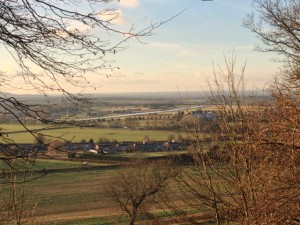The first phase of the London Array, the world’s largest offshore wind farm, became operational in March (2013) in the Thames estuary.
It’s a notable achievement. 175 turbines will power 470,000 homes, replacing 900,000 tonnes of carbon dioxide a year. They will make a big contribution to meeting the government’s target to raise 15% of its energy from renewable sources by 2020.
So the UK renewable energy sector should be feeling pleased with this “monumental feat of green engineering”, in the words of RenewableUK’s chief executive, Maria McCaffery.
Not quite. The three investors are all overseas companies. 20% came from of state-sponsored Abu Dhabi renewable energy company Masdar. Norwegian company DONG Energy owns 50%, and German E.ON has 30%. The turbines were built in Germany.
It may prove difficult to “repatriate” wind energy (the last major factory, on the Isle of Wight, closed in 2009), in the country where the ancient windmill is as much a tourist attraction in the countryside as the mediaeval church. So what about solar, the other fast-moving renewables sector where UK is making its mark as a centre for research and development, with lots of small companies busy with installation.
This week the Building Research Establishment (BRE) National Solar Centre (NSC) was opened by Energy Minister Greg Barker in St Austell, Cornwall. Could it, as the minister hopes, transform the UK solar industry into a global player?
The estimated value of today’s UK solar market is £1.5bn. The projection is that by 2020 it will be worth £21.4 bn. The hope is that the NSC, part paid for by the European Regional Development fund (£870k over two years), with matching funding from 20 founding members drawn from the leading players in UK solar industry, will play a key role in driving forward this country’s solar industry.
The NSC is intended to be a centre for excellence for the use of solar energy in the UK. Located at the eco-community at St Austell, the site will have purpose built facilities including a solar farm and indoor and outdoor testing capabilities.
Working with local partners, including the Eden Project, Cornwall Sustainable Building Trust, Plymouth University, and Exeter University’s Tremough campus, the centre will “provide a respected voice for solar PV in the UK and link to international best practice and provide investors with confidence to develop all types of projects in the UK.” It will provide industry led research, analysis and testing and training facilities where industry experts and organisations can share knowledge, data and developments.
Minister Greg Barker said work carried out by the Centre would not only help to cut costs, improve efficiency and drive forward innovation in the sector, it would also help position the UK as a top destination for global investment in this emerging technology.
The St Austell location for the Centre was chosen because the majority of the UK’s solar PV installations are focused in South West England, with around 56,000 installations in the region. Cornwall itself offers the most sunshine hours of any county in the UK combined with an infrastructure and business environment specifically designed to help push the industry forward.
BRE notes: “In order for solar PV to become an industry with 22GW of installed capacity by 2020 there is a need for a centre which allows the industry to mature and thrive.”

